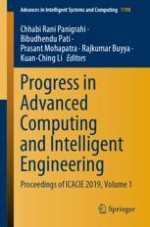This book features high-quality research papers presented at the 4th International Conference on Advanced Computing and Intelligent Engineering (ICACIE 2019), Department of Computer Science, Rama Devi Women’s University, Bhubaneswar, Odisha, India. It includes sections describing technical advances and contemporary research in the fields of advanced computing and intelligent engineering, which are based on the presented articles. Intended for postgraduate students and researchers working in the discipline of computer science and engineering, the book also appeals to researchers in the domain of electronics as it covers hardware technologies and future communication technologies.
